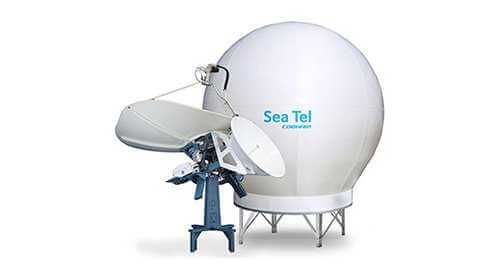Oct 23, 2017
Representing a great opportunity for our industry, High Throughput Satellites (HTS) offer a higher capacity in the sky than was previously available. Instead of a wide beam that covers a large geographic area, HTS splits this into multiple “spot beams” that together cover a particular region. Think of country beams instead of continental beams.
Where does the “high throughput” come from? As compared with wide beam satellite services, HTS satellites deliver more throughput thanks to frequency re-use, and using more focused power in an area, by using smaller beams. This delivers more “margin” which effectively delivers more throughput through the beam.
Frequency reuse is the process of using frequencies within a geographic area that are separated by enough distance such that interference is not a problem, thus more sites can be served using a limited amount of frequency spectrum. HTS systems take advantage of the tight beams covering small areas, such that several beams may reuse the same frequency. The same frequency in a beam covering Nigeria, for example, might be used a distance away, such as in another beam covering Egypt, and there would be no interference.
Challenges on the Ground
Along with the throughput advantages, there are some complexities that need to be taken into consideration when determining how to deploy and operate a new HTS service. Ground infrastructure has to be put in place to leverage the increased throughput, including scalability, performance and automation. Hub infrastructure, including line cards and the network management system have to scale from supporting tens of beams to supporting hundreds of beams. In the past, teleports could be placed just about anywhere within the beam, but with HTS, all the hub infrastructure has to be consolidated into either a single or a couple of gateways.
Line cards for hubs have to be designed to support higher symbol rates, in order to leverage the available capacity. Higher IP throughputs must be supported by having access to better modulation and coding (modcod) options. Saturating transponders with GigE levels of throughput is now the target.
Managing these new features will require new Network Management solutions that can scale to support tens of thousands of sites. A distributed network architecture is desirable for managing large global networks. A network management “presence” is required within each teleport, along with a distributed presence within primary and backup Network Operations Centers (NOC). The management platform should leverage Open API’s (Application Programming Interfaces) to permit integration with third party network management applications. This will give service providers the ability to offer customized Service Level Agreements (SLAs), and ensure that they are met, and that operational costs are reduced as much as possible while ensuring that customer satisfaction remains high. Managing accelerated customer demand for activations, retaining control and responsiveness to service issues, while providing a seamless interface with other business and operating systems, will be needed to deliver a streamlined and automated network management process.
Of course out in the field, higher bit rates will also be required on the remote side to deliver higher throughput. To deliver the solutions their clients demand, service providers will need a range of remote side terminals in various form factors, ranging from rack-mountable to desktop, to outdoors-tolerant; and these terminals will need to deliver a wide range of data speeds and support a wide range of applications. In concert with the hub, remote terminals will need to support higher modulation and coding techniques, higher processing capabilities and higher symbol rates, and all of this will have to be manageable from the ground infrastructure.
The advances in HTS throughput are well understood, now with ground infrastructure being upgraded by Satcom platform providers, this throughput is ready to be taken advantage of. Satellite operators and service providers are staging ground infrastructure from leading Satcom technology vendors to see who can best capture the HTS opportunity.





